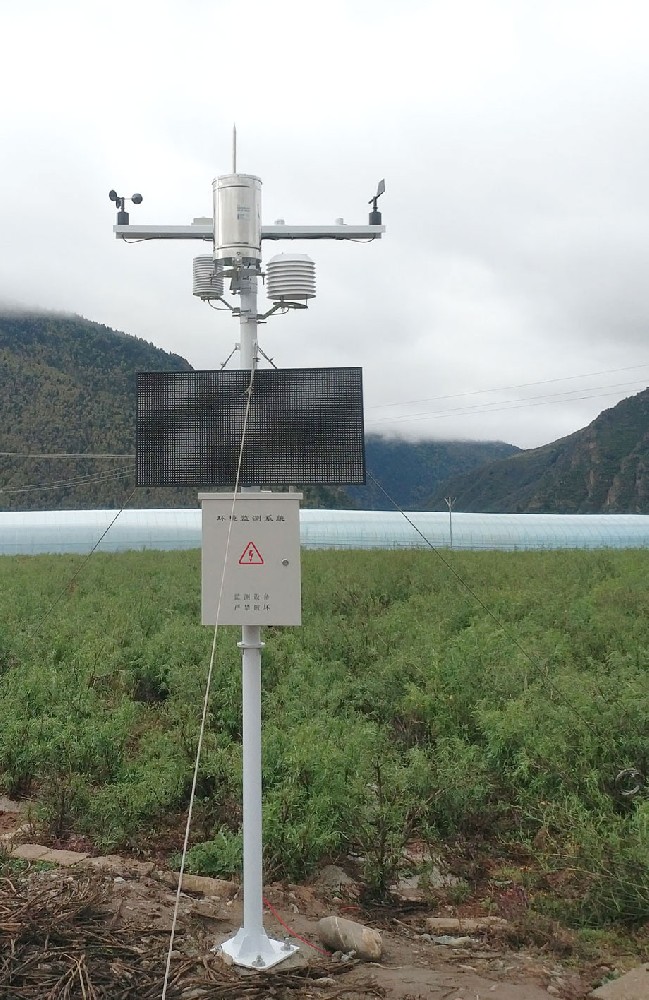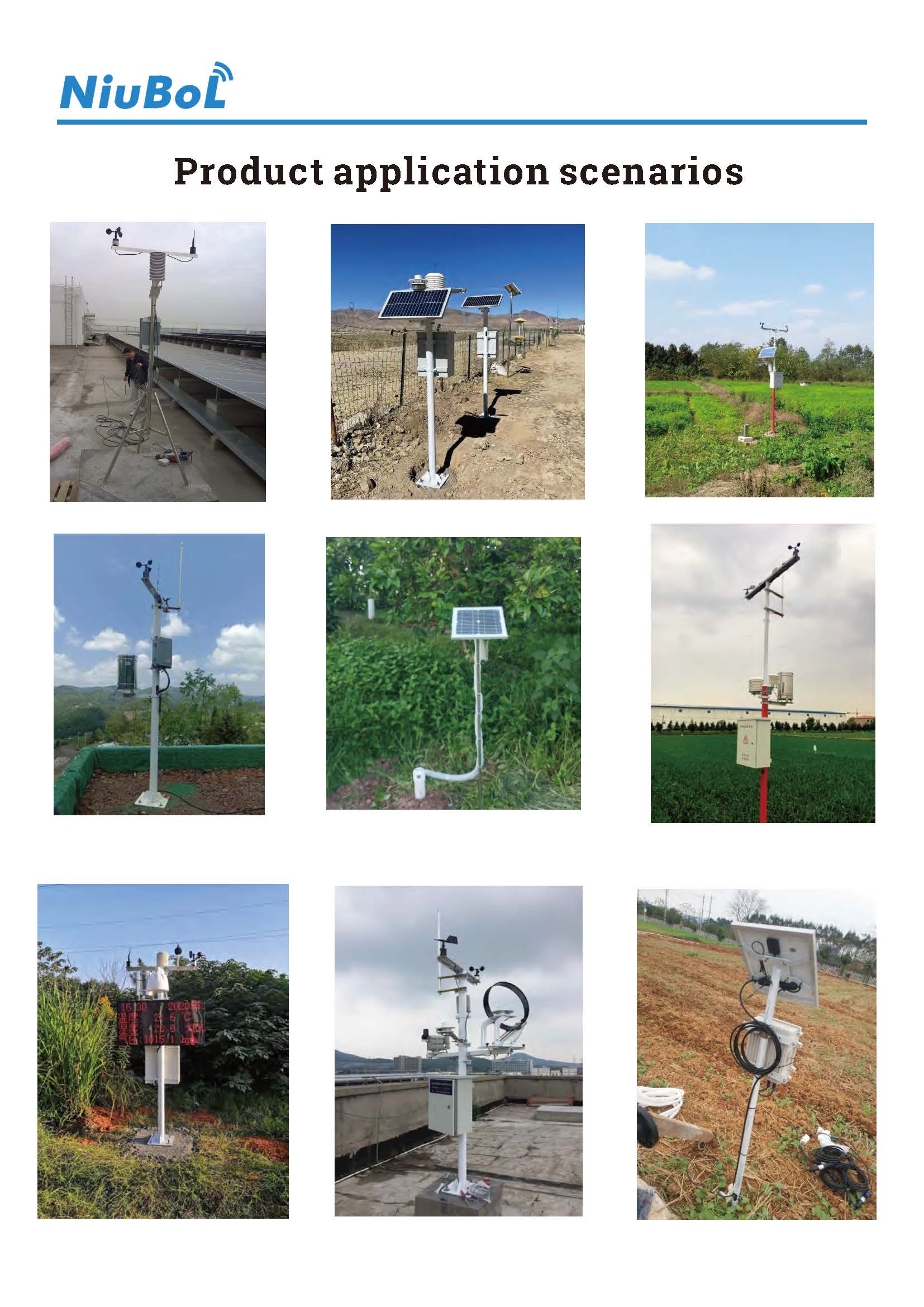

— Blogs —
—Products—
 Consumer hotline +8618073152920
Consumer hotline +8618073152920 WhatsApp:+8615367865107
Address:Room 102, District D, Houhu Industrial Park, Yuelu District, Changsha City, Hunan Province, China
Product knowledge
Time:2024-09-24 16:00:04 Popularity:1117
With the progress of science and technology, small weather stations are increasingly widely used in many fields such as agriculture, military, scientific research and environmental monitoring, and have become an important tool for obtaining real-time weather data. In order to ensure the continuous and stable operation of small weather station, prolong its service life and provide accurate and reliable weather data, reasonable maintenance and repair are crucial. The following is a detailed guide on the maintenance of small weather stations:
1. Regular calibration of sensors: Sensors are the core components of small weather stations, and their accuracy directly affects the reliability of data. It is recommended to carry out professional calibration at least once a year, including wind speed, wind direction, temperature, humidity and other sensors, to ensure the accuracy of measurement data.
2. Check the connection line: Regularly check whether the connection line between each sensor and the data collector is firm, whether there is any damage or aging phenomenon, and replace the damaged cable in time to prevent data transmission interruption.
1. Monitor the power supply: regularly check the power supply of the small weather station (e.g. solar panels, batteries) to ensure that the power is sufficient to avoid data loss or equipment downtime caused by insufficient power. For equipment using batteries, batteries should be replaced regularly to ensure long-term stable operation of the equipment.
2. Lightning and surge protection: In lightning-prone areas, lightning protection devices should be installed to protect small weather stations from damage caused by lightning and surge. Regularly check the effectiveness of lightning protection facilities to ensure their normal operation.
1. Keep clean: use a clean, dry soft cloth to regularly wipe the shell of the small weather station and the sensor surface to remove dust, dirt and other impurities, to avoid affecting the performance of the sensor. Regularly open the device for internal cleaning to remove dust and debris. Note that in the cleaning process to avoid the use of corrosive or humid detergents.
2. Anti-scratch protection: Maintain the integrity of the external protective film of the small weather station to prevent it from being scratched by sharp objects. For parts that are easily damaged, consider adding a protective cover or taking other protective measures.
3. Avoid obstruction: Ensure that the installation location of the small weather station is open and unobstructed so that the sensor can accurately capture real weather data. Regularly clean up the surrounding obstacles that may affect data collection.
1. Firmly fixed: When installing the small weather station, make sure that the connecting parts are firmly fixed to prevent the equipment from being loosened or damaged due to wind, vibration and other factors. Regularly check the fastening of the fixed parts and make timely adjustments.
2. Wind and rain: According to the use of the weather station environment, choose the appropriate wind and rain measures. For equipment installed in the open air, ensure that there are sufficient protective measures to withstand inclement weather. For weather stations with shells, regularly check and replace damaged shell parts.
1. Avoid rough operation: When operating the small weather station, you should avoid rough treatment so as not to damage the internal circuit boards and precision structures. When handling or moving the equipment, it should be gently held and put down to avoid collision or fall.
The sensor of the weather station is its core component, responsible for collecting various meteorological data. In order to ensure the long-term stable operation of the sensor and the accuracy of the data, regular maintenance and correct operation is essential. The following are some steps and suggestions for maintaining the sensors of a small weather station:
- Appearance check: Check the appearance of the sensor periodically to ensure that there are no breakages, corrosion or foreign objects attached.
- Connection check: Check that the connecting wires between the sensor and the data collector are secure and not frayed or damaged.
- Function check: Test the function of the sensor periodically to ensure that its output data is accurate and reliable.
- Clean the sensor: Use a soft cloth or brush to gently clean the surface of the sensor to remove dust, dirt, insects, etc.
- Anti-corrosion: For exposed metal parts, you can apply an appropriate amount of anti-corrosion ointment.
- Anti-moisture measures: Ensure the sensor is dry to avoid moisture intrusion, and use a protective cover if necessary.

- Periodic calibration: Calibrate the sensor periodically according to the manufacturer's recommendations to ensure the accuracy of the data.
- Use a standard instrument: Use a calibrated standard instrument as a reference for calibration.
- Lightning protection: Ensure that the sensor's lightning protection is effective, especially by checking it before the thunderstorm season.
- Wind protection: For wind speed and direction sensors, ensure that they are securely fixed and protected from strong winds.
- Sun protection and insulation: For temperature and radiation sensors, take appropriate sun protection and insulation measures to avoid direct sunlight causing deviation in readings.
- Moisture-proofing measures: Keep the equipment dry to avoid damage to the instrument caused by humid environments.
- Winter: Pay attention to frost protection to ensure that the liquid inside the sensor will not freeze.
- Summer: prevent overheating, make sure the sensor has enough space for heat dissipation.
- Record maintenance: After each maintenance, record the maintenance date, maintenance content and problems found.
- Tracking Sensor Performance: Periodically check for changes in sensor performance and record any abnormalities.
- Temperature and humidity sensors: check vents regularly to prevent dust and moisture buildup.
- Soil Sensor: Clean the soil contact part to avoid soil buildup affecting measurement accuracy.
- Wind speed and direction sensors: check the rotating parts for smoothness and remove possible obstructions.
- Strictly follow the operating instructions: Follow the operating instructions and user guide provided by the manufacturer.
The above maintenance measures can ensure the long-term stable operation of small weather station sensors, reduce the failure rate and improve the accuracy and reliability of data collection.
1. Regular maintenance: In addition to daily maintenance, it is recommended to carry out professional maintenance at least once a year, including checking the internal circuit boards of the equipment, the performance of the sensors, the data processing system, etc., to ensure that the overall operating condition of the equipment is good.
2. Training and guidance: Provide professional training to the personnel using the small weather station to improve their operating skills and maintenance awareness, and ensure that the equipment can be used correctly and maintained effectively.
3. Software and data management: update the software to the latest version, and back up the data regularly to prevent data loss.

In summary, the maintenance of small weather station is a systematic project, which needs to start from many aspects to ensure the long-term stable operation of the equipment and provide accurate and reliable weather data. Through the above maintenance measures, the performance stability of small weather station can be significantly improved, reduce the failure rate, ensure long-term efficient operation, and improve its value for agricultural production and scientific research to provide reliable data support.
Related recommendations
Sensors & Weather Stations Catalog
Agriculture Sensors and Weather Stations Catalog-NiuBoL.pdf
Weather Stations Catalog-NiuBoL.pdf
Related products
 Combined air temperature and relative humidity sensor
Combined air temperature and relative humidity sensor Soil Moisture Temperature sensor for irrigation
Soil Moisture Temperature sensor for irrigation Soil pH sensor RS485 soil Testing instrument soil ph meter for agriculture
Soil pH sensor RS485 soil Testing instrument soil ph meter for agriculture Wind Speed sensor Output Modbus/RS485/Analog/0-5V/4-20mA
Wind Speed sensor Output Modbus/RS485/Analog/0-5V/4-20mA Tipping bucket rain gauge for weather monitoring auto rainfall sensor RS485/Outdoor/stainless steel
Tipping bucket rain gauge for weather monitoring auto rainfall sensor RS485/Outdoor/stainless steel Pyranometer Solar Radiation Sensor 4-20mA/RS485
Pyranometer Solar Radiation Sensor 4-20mA/RS485
Screenshot, WhatsApp to identify the QR code
WhatsApp number:+8615367865107
(Click on WhatsApp to copy and add friends)
